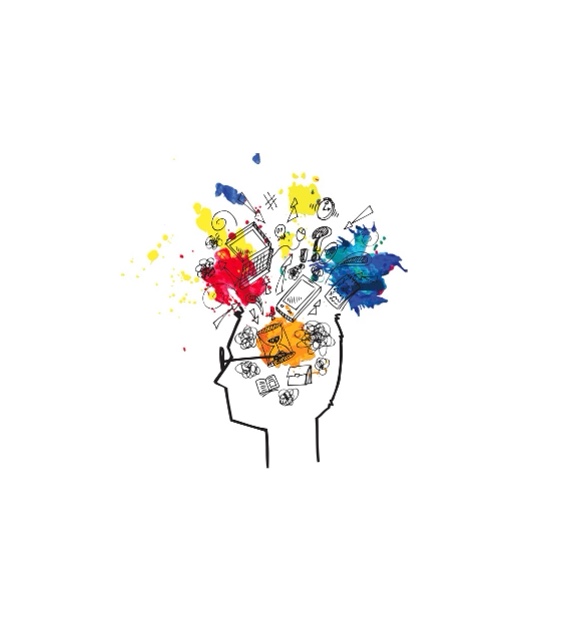When the networks officially called the 2020 election for Joe Biden, I had just come home from some morning errands. Upon seeing the news on TV, I started to sob. I mean, really sob — body shaking, uncontrollable tears — and the waves of crying just kept coming. My five-year-old daughter looked at me with concern and tenderness as she put her little arms around me. “Mommy’s just happy,” I choked through my tears, not wanting to scare her. And then I just held her and kept on sobbing — her small body literally supporting mine.
But my response was about more than just happiness or relief. In that moment, my body revealed to me a deeper truth — about the toll of the previous eight months of pandemic parenting, the previous 18 months of election preparation, and the previous four years in the resistance against Trump. For the first time in four years, it felt as though a massive boulder had been lifted off my chest, like I had been kept under water and had finally broken through to the surface.
What’s the effect of not being able to breathe for four years? What kind of impact does it inflict on the body and the mind?
For activists, organizers, policy nerds, and others who work in and around the progressive movement, the past four years have been some of the most taxing we’ve worked through. We have made sacrifices in our physical health and emotional wellbeing, and our personal relationships have suffered. We watched with horror as the rise of white supremacy, fascism, extremist hate, and disinformation rocked every sector and every issue that we care about — and just when we thought another shoe couldn’t possibly drop, it did. We lost loved ones and community members to a virus that ravaged our country precisely because of the former President’s incompetence, indifference, egotism, and cruelty.
The Trump years (and especially 2020) have had a deep impact on everyone’s mental health. What has it done to those of us who had the responsibility for stopping him?
***
I started my new position as the Managing Director of the advocacy division at Planned Parenthood’s national office two weeks after Trump’s inauguration, as we faced the largest threat to the organization’s existence in its one hundred-year history. In my first week, a colleague burst into tears at my desk about a seemingly trivial matter. People had been routinely working in the office until 10 or 11 pm every night for weeks. Some days, it seemed like my job was reminding people to eat and drink water. And yet, the urgency of the threat we faced seemed far more potent than the urgency of our rapidly declining physical and mental health.
I am a cis, biracial, economically privileged person who has been working mainly for DC-based, nationally-focused, white-dominant, well-resourced organizations. My experience is far different from front-line community organizers and those who are physically unsafe because of their skin color or gender identity. For me and many of my colleagues in similar positions, our woes seemed elitist and privileged compared with those we were fighting for — women whose bodily autonomy hung in the balance of a court case, the kids separated from their parents at the border, the family members and loved ones of Black people killed by police. For movement professionals who are BIPOC, queer and trans, immigrants and Dreamers, the psychological toll of working on these issues while also experiencing the trauma of their effects was truly too much at times. And yet, we kept working and campaigning and organizing relentlessly. We kept fighting and resisting and fighting and resisting. Because we had to. There was no other choice.
Now the Biden Administration is in, and the world of policy and politics continues without pause — if anything, the pace of work has ticked up as progressives pivot to governing mode and work to ensure our agenda is enacted by organizing Democrats in power from the left flank. And let’s not forget about state houses, which are already working to roll back voting rights, access to reproductive health, and protections for workers. Oh and by the way, we’re still in the middle of a global pandemic that has taken its own toll on our health and wellbeing, in addition to the unprocessed grief of half a million deaths, disproportionately of Black and brown people.
It’s never been a cakewalk to work in the progressive movement, but have we recognized how much more difficult the last four years have been? Have we honored and processed the experiences we’ve had and learned the lessons we need to in order to win in the future? Do we have some sense of closure from the past four years so we can look to the future from a place of strategic vision, creativity, and energy — or are we just running on fumes, trudging along well-worn paths, and going through the motions?
We are at a critical moment for the nation and, especially, social justice movements to name and process the trauma that we have all collectively just been through and to give time and space to the work it takes to heal. From the healing justice movement to Dreamers integrating mental health into organizing to Black organizers in Georgia centering radical rest and healing, community-based BIPOC organizers have been and continue to be leaders in this work — and they are winning. If the rest of us don’t follow suit, I see a few major consequences.
First, we will most certainly burn out our people, especially people of color whose leadership we desperately need at this moment. We already know we face a racial leadership gap in our sector and, if we don’t pay attention to this gap at a deeper level than just hiring practices and implicit bias trainings, we will never make our organizations truly inclusive and equitable. I have recently been engaged in the business of planning a new social justice leadership development initiative for BIPOC organizers and other movement professionals. A consistent theme we heard from both early-career and mid-career prospective participants is the need for healing spaces to name, understand, and skillfully process trauma — the trauma of living as a Black or brown person in America, the trauma of working to dismantle systems that simultaneously oppress us, and the trauma of going into organizations and spaces where we think we’ll find like-minded values, and then quickly becoming disappointed and disillusioned. Our current and future strategists and campaigners are holding these heavy burdens, and we must help to ease them, or else we are part of the problem.
Another consequence is that our movements will remain in “survival” mode, working to make it past the next immediate threat or grant deliverable but not thinking strategically and collaboratively about what it will take to build collective power in the long run. It’s well known that being in a constant state of heightened threat hinders our ability to think imaginatively or even to perform basic tasks like completing and prioritizing projects. This tunnel vision results in our movement remaining fractured and siloed, with the same players jockeying for position and resources, using the same strategies and tactics for marginal, incremental gains. That’s not what winning looks like.
In recent years, progressive organizations have struggled internally with reckonings around racial justice, sexual harassment, and work culture, as workers rightly attempt to align our actions with our stated values. Although this work has been painful and messy at times, it is necessary for us to dismantle structural oppression within our own house if we want to dismantle it more broadly. Similarly, we need to do the work to recognize, name, and heal from trauma (not just of the past four years, but it’s one place to start) if we want to replace oppressive systems with non-harming, liberatory ones. We cannot let any experience of harming be normalized — in the world or within our sector. We must not just throw up our hands, call the progressive environment “toxic,” and keep on operating with exhaustion and depletion as the default mode. In order to be effective change agents, we need to be whole, resourced human beings who know (not just in our minds but in our bodies) what we are working for, not just what we’re fighting against.
***
So what would a healing agenda look like?
First, there can be no healing without accountability, a sentiment Rep. Alexandria Ocasio-Cortez shared with such poignancy and vulnerability in processing her experience of the insurrection of the Capitol. We absolutely need truth and accountability for those who have perpetrated harm and injustice at the highest level — not only during the past four years but throughout our nation’s history. Additionally, we need to hold ourselves accountable within movement spaces. What is the work we need to do within our organizations, coalitions, and interpersonal relationships to name and process harmful experiences, shift practices and culture, and create a sense of collective and shared responsibility for the dignity and wellbeing of our people?
Second, we need to resource this work with time and money (but to be honest, time is the harder resource to come by). That means time to process and hold space for grief. It means time for people to be in community with each other and develop resources for community care. It means slowing down some work, or deciding not to pursue some work at all. It means hiring expert clinicians and facilitators to attend to these long and painful journeys — like movement chaplains and healing justice practitioners, in addition to licensed therapists and trauma experts. These are not particularly developed practices, especially in white-dominant organizations and spaces; now is the time to build new competencies around this work.
Lastly, we must understand that, as movement activists, we cannot dismantle the legacies of white supremacy, colonialism, and racial capitalism — either in the world or in ourselves — until and unless we face the trauma these systems inflict and begin the hard work to heal from these painful histories. The very work to heal ourselves will slowly move us away from toxic and harmful systems and mindsets, and towards just, inclusive, and liberated ones. These painful histories are not only in the past. They are very much with us here and now, they are very much on display every day — in the Senate, on Twitter. They’re flooding our inbox and Slack workspaces right at this moment.
In Love and Rage, Lama Rod Owens explains: “To hold space for our pain is a way that we begin to take care of our pain. Taking care of our pain softens our hurt as we do the work of empathizing with ourselves. Empathizing with ourselves makes it easier to empathize with others around us. This empathy is at the root of the love and compassion that will begin to disrupt the systems that create harm.” I am only starting to take care of my pain, only starting to discover the work that I need to do to hold myself accountable, only starting to make space for the feeling of sustained joy in my body. What will be the effect of moving through the world with sustained joy over the next few years and beyond? I’m not sure, but I know that for me to do my part in the movement, I need to find out. This isn’t work any of us should do alone. My fervent hope is that all of us in movement spaces can do it together.

